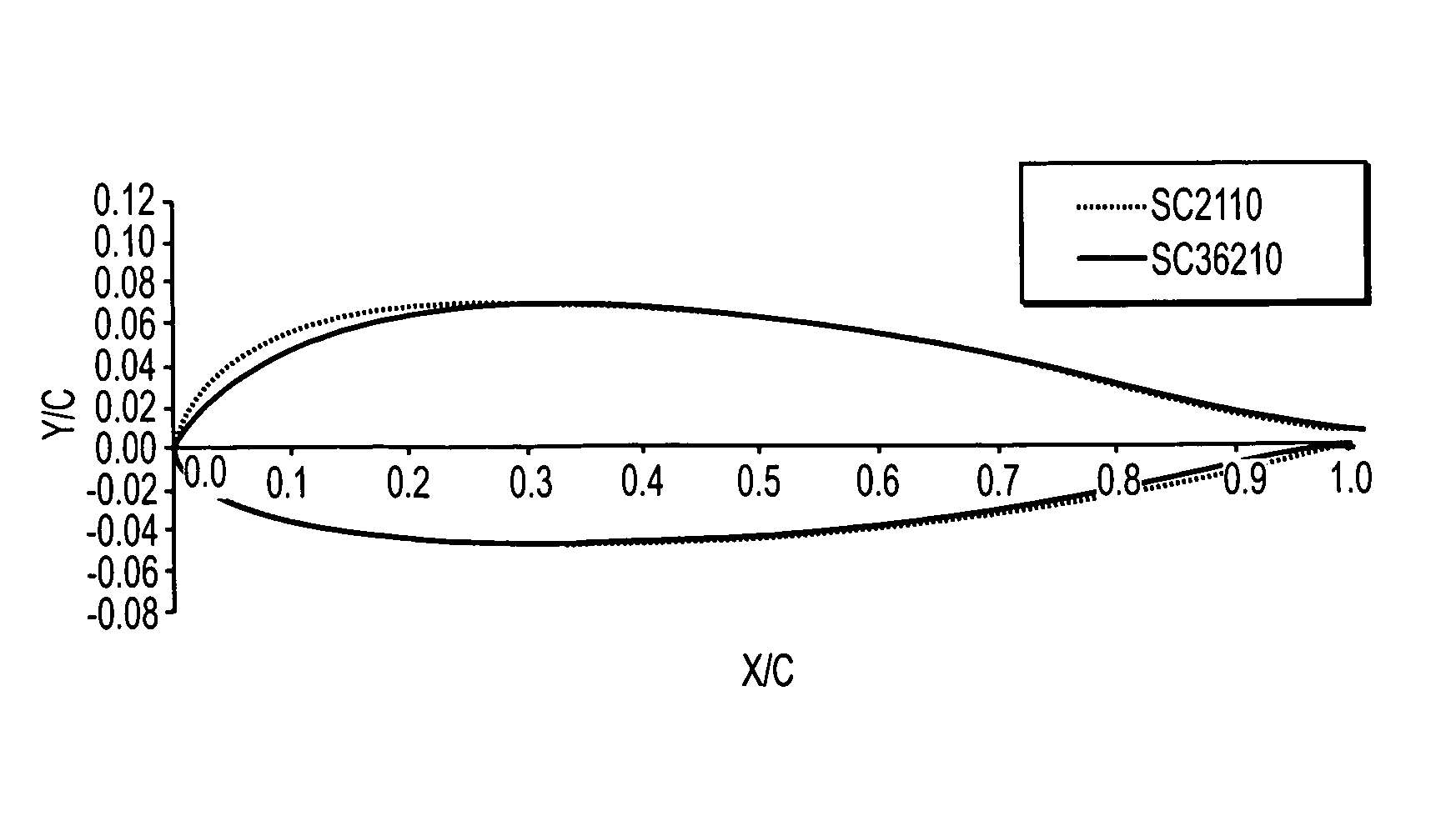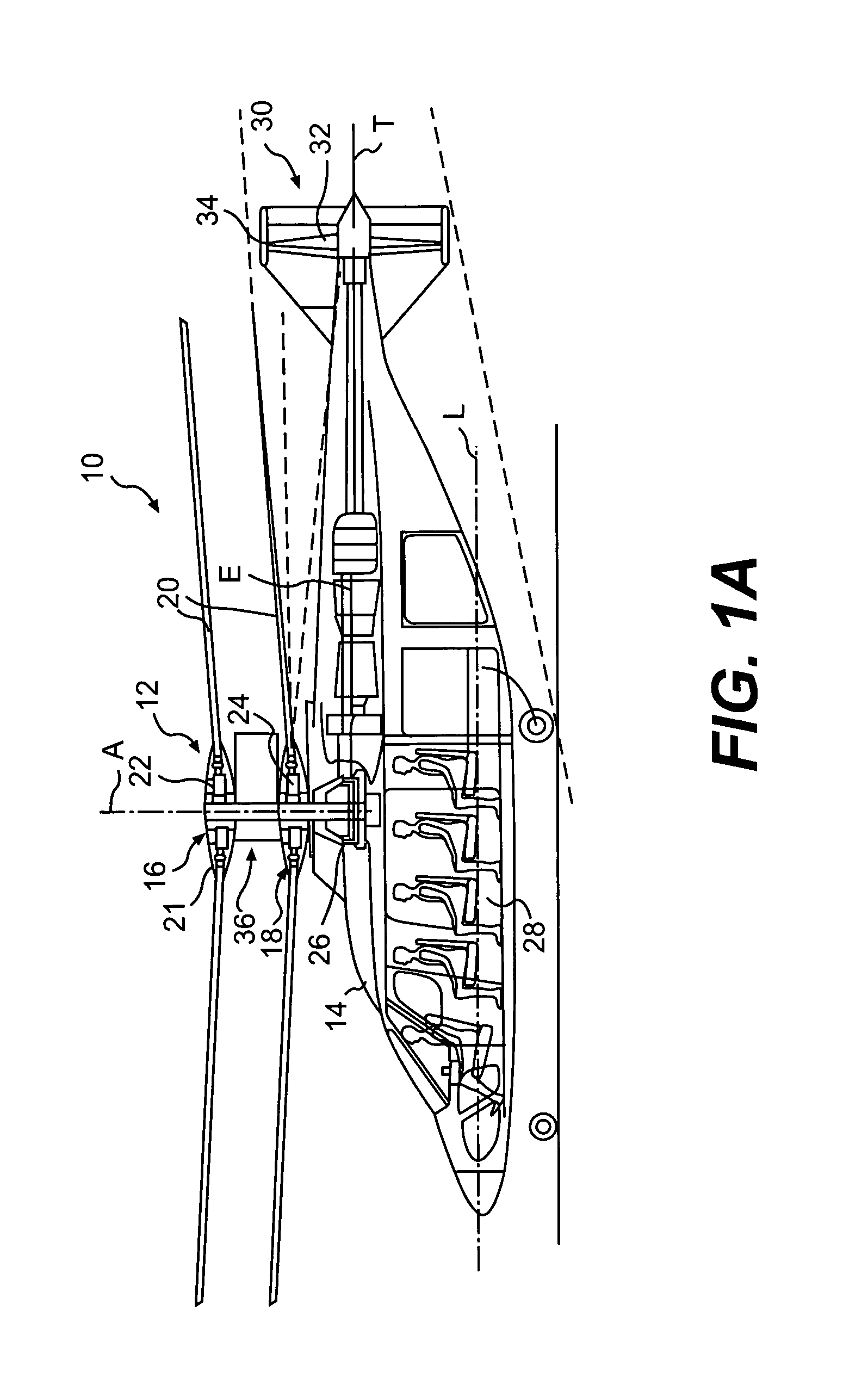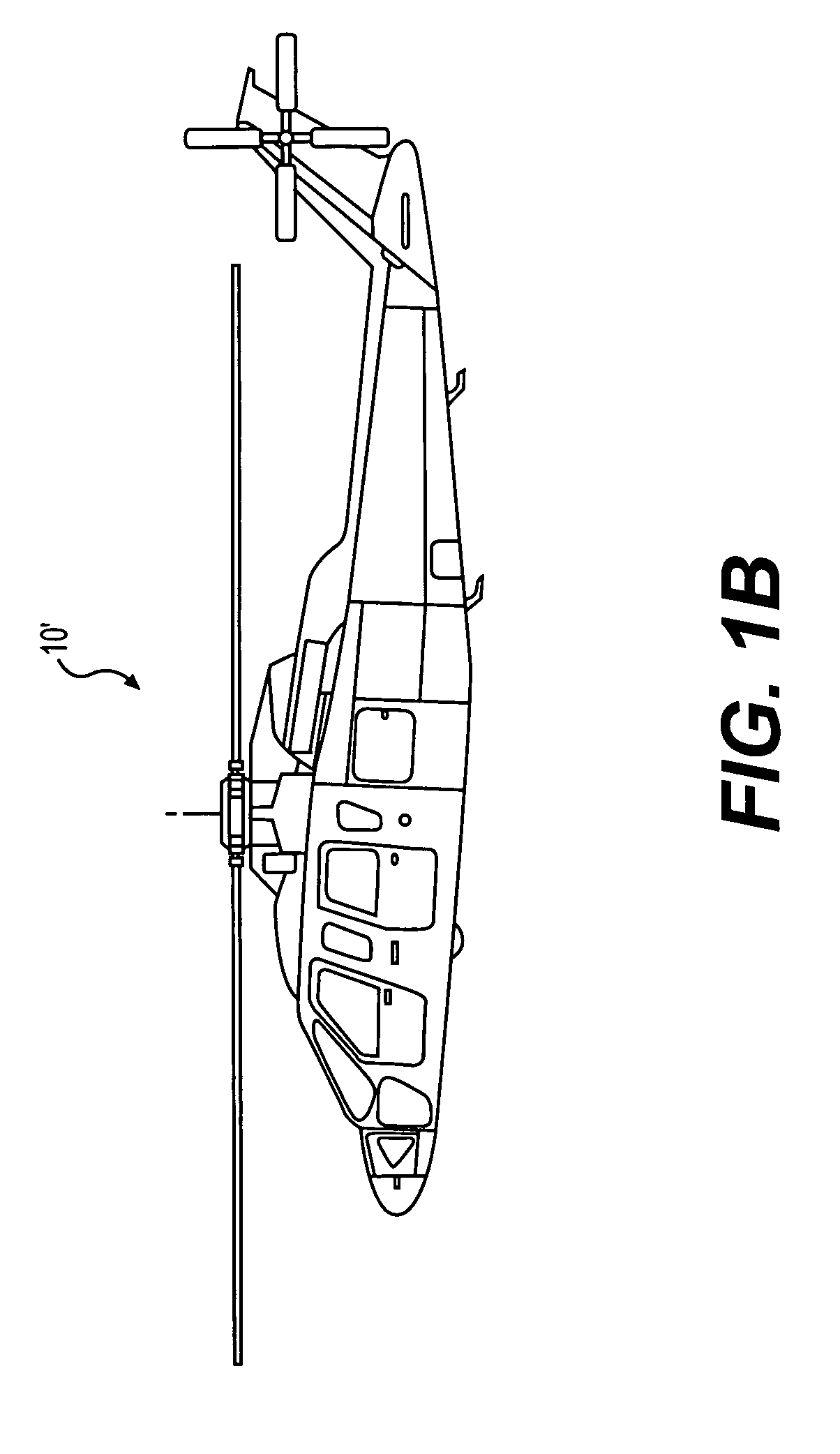Airfoil for a helicopter rotor blade
a technology of helicopter rotor blade and airfoil, which is applied in the direction of reaction engines, machines/engines, transportation and packaging, etc., can solve the problems of blade approaching a stall, slow airflow velocity across the retreating blade, and the tendency of the retreating blade to stall at high forward airspeed, so as to improve the maximum lift coefficient and drag divergence mach number performance, reduce thickness and camber, and improve the effect of airfoil performan
- Summary
- Abstract
- Description
- Claims
- Application Information
AI Technical Summary
Benefits of technology
Problems solved by technology
Method used
Image
Examples
Embodiment Construction
[0029]FIG. 1A illustrates an exemplary high speed compound rotary-wing aircraft 10 having a dual, contra-rotating, coaxial rotor system. 12. The aircraft 10 includes an airframe 14 that supports the rotor system 12 as well as a propulsive system 30 which provides translational thrust generally parallel to an aircraft longitudinal axis L. Although a particular aircraft configuration is illustrated in the disclosed embodiment, other helicopter configurations such as tandem rotors, as well as more conventional single rotor helicopters (FIG. 1B) will also benefit from the present invention.
[0030]By way of background information, a high speed compound rotary-wing aircraft with a dual, contra-rotating, coaxial rotor system as shown in FIG. 1 is capable of higher speeds compared to conventional single rotor helicopters due in part to the balance of lift between the advancing sides of the main rotor blades on the upper and lower rotor systems. In addition, the retreating sides of the rotors...
PUM
| Property | Measurement | Unit |
|---|---|---|
| lift coefficient | aaaaa | aaaaa |
| constant lift coefficient | aaaaa | aaaaa |
| lift coefficient | aaaaa | aaaaa |
Abstract
Description
Claims
Application Information
 Login to View More
Login to View More - R&D
- Intellectual Property
- Life Sciences
- Materials
- Tech Scout
- Unparalleled Data Quality
- Higher Quality Content
- 60% Fewer Hallucinations
Browse by: Latest US Patents, China's latest patents, Technical Efficacy Thesaurus, Application Domain, Technology Topic, Popular Technical Reports.
© 2025 PatSnap. All rights reserved.Legal|Privacy policy|Modern Slavery Act Transparency Statement|Sitemap|About US| Contact US: help@patsnap.com



